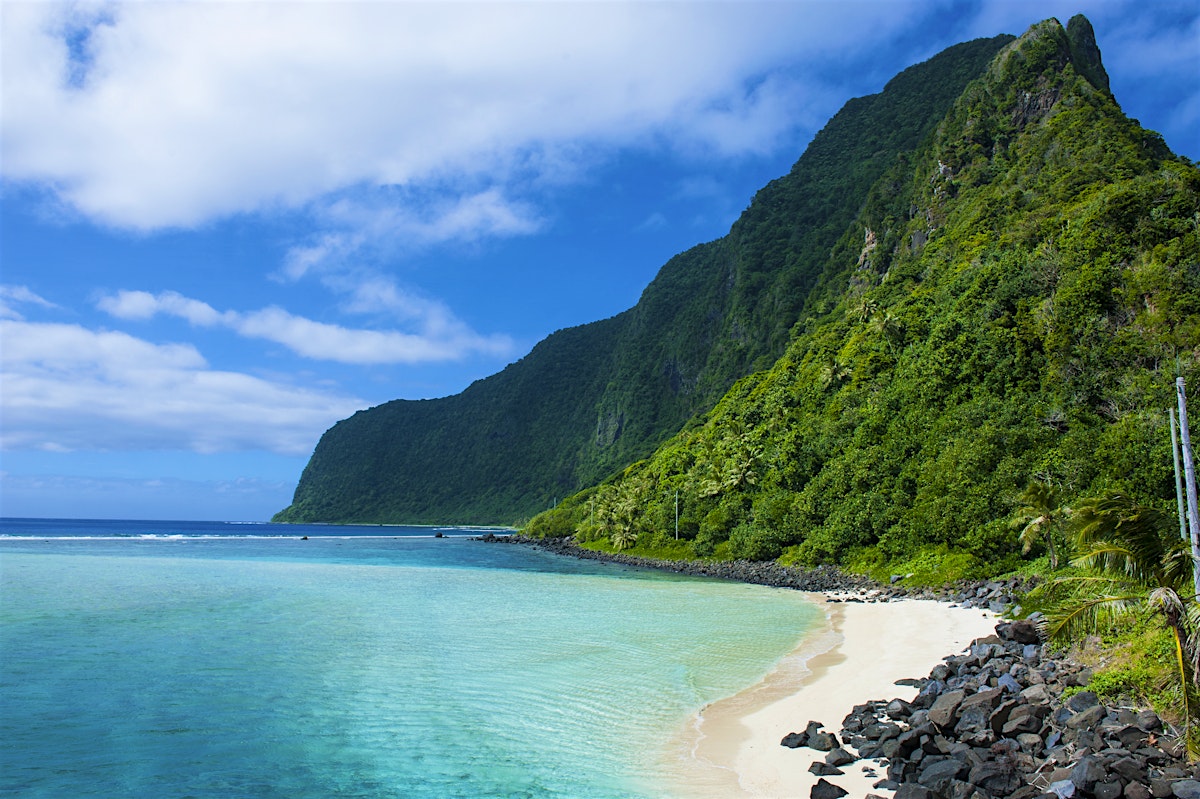The name Samoa most likely comes from the Samoan words sa meaning “sacred” and moa, meaning “center.” There may be
other theories out there, but I couldn’t find anything substantial.
This island nation is located in the south Pacific. It’s
slightly northwest of the island of Niue, south of Tokelau, and east of Wallis
& Fortuna (belonging to France). There are two main islands (Savai’i and
Upolu) along with four smaller islands. The US territory of American Samoa lies
southeast of Upolu (American Samoa itself actually refers to five main islands
and two atolls.). The climate here is tropical, with a rainy season that lasts
from November to April. The islands used to be covered in lowland tropical
rainforests, but nearly 80% of those have been lost.
It’s believed that Samoans landed on these islands nearly
3000 years ago, but from where exactly, it’s still somewhat disputed. They
share cultures, languages, and genetics with other nearby islands (namely Fiji
and Tonga). The Dutch were the first to arrive in 1722, followed by the French
in 1768. English missionaries (through the London Missionary Service) and other
traders began making their way to the islands during the 1830s. However, the
Germans looked upon the islands with more of a commercial purpose in mind,
mainly with copra (dried coconut meat) and cocoa production. At the same time,
the US started taking interests in the eastern islands as a territory, and
several became known as American Samoa. The Samoans entered a civil war, and
the British, Germans, and US each began sending in ships to protect and control
their interests. A storm hit and destroyed most of the ships, ending the conflict;
they signed an agreement giving the eastern islands to the US (American Samoa)
and the western side to Germany (German Samoa). During the German’s 14-year
rule, an uprising took place. The response was to banish the leader of the
uprising to the German-held Northern Mariana Islands. New Zealand then
controlled the islands from WWI to 1962, when they became known as Western
Samoa. They were hit hard by the global influenza epidemic of 1918-1919 (I
didn’t fully realize how widespread this epidemic was). The Samoans weren’t
really happy with New Zealand’s control either, and there were several
uprisings, some ending tragically for the Samoans. In 1962, they finally gained
their independence, making them the first small-island nation in the Pacific to
do so. In 1997, they voted to change their name from Western Samoa to just
Samoa (something American Samoa wasn’t happy with apparently, thinking it would
be confusing and diminishing their own identity).
Located on the northern coast of the island of Upolu, the
city of Apia serves as its capital and largest city. Historically, the city
also served as the capital of German Samoa as well. It serves as the center of
the government as well as center for most other services (financial, education,
media, transportation, etc.). The Scottish writer Robert Louis Stevenson lived
out his final years in Apia. The winters are probably WAY better than in
Scotland.
Samoa is an economically developing country. Agriculture is
still a top exporter, especially in taro root, bananas, cocoa, noni, copra, and
coconut cream/coconut oil. There has been some investment in expanding the
financial sector along with tourism.
Because of Samoa’s history of being controlled by
Christian-dominant countries, it’s no wonder that Christianity has a strong
stake here still. The largest denomination is the Christian Congregational
Church of Samoa, followed by Roman Catholic and Methodist and several others.
Despite the fact that Samoa’s constitution declares Samoa as a Christian nation
(a change made only last year), there is also a sizable number of Baha’i
followers.
English is the official language along with Samoan (known as
Gagana Fa’asamoa). There are actually more Samoan speakers (including
second-language learners) than English speakers. Samoan is similar to other
Polynesian languages like Hawaiian, Tongan, Maori, Tahitian, and Rapanui. And
there is also Samoan Sign Language for the deaf community and a Samoan Braille
as well.
Two things I read about caught my attention: in 2009, Samoa
switched to driving on left, something they felt aligned them with other
countries in the world. I always wondered what that process looks like in
logistically getting everyone to switch over. I just imagine a lot of head-on
collisions during the first couple of months. Another thing that amazed me was
that in 2011, they moved the International Date Line so that they were in line
with Australia and New Zealand. Previously they were 21 hours behind Sydney,
the result of being set up in the 1890s to work with Californian businesses.
Now, realizing they have much stronger economic ties to Australia and New
Zealand, they are only ahead of them by three hours. It certainly makes a lot
more sense.
Up next: art and literature




No comments:
Post a Comment